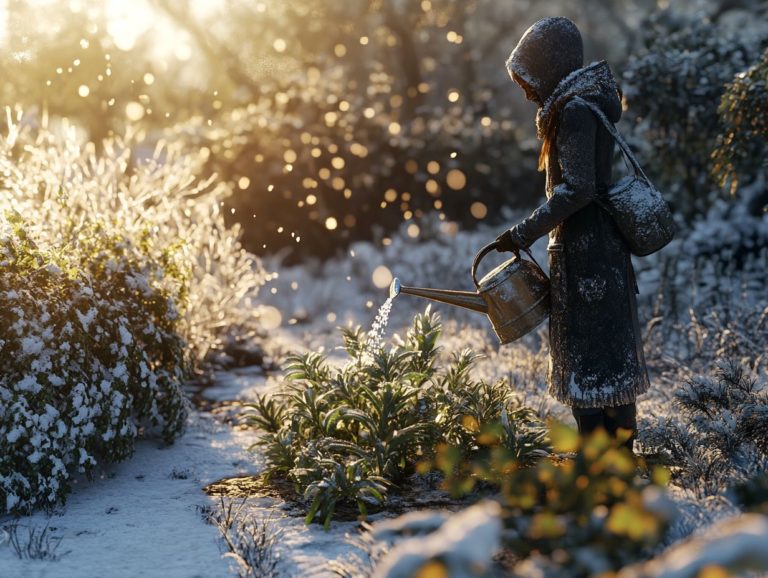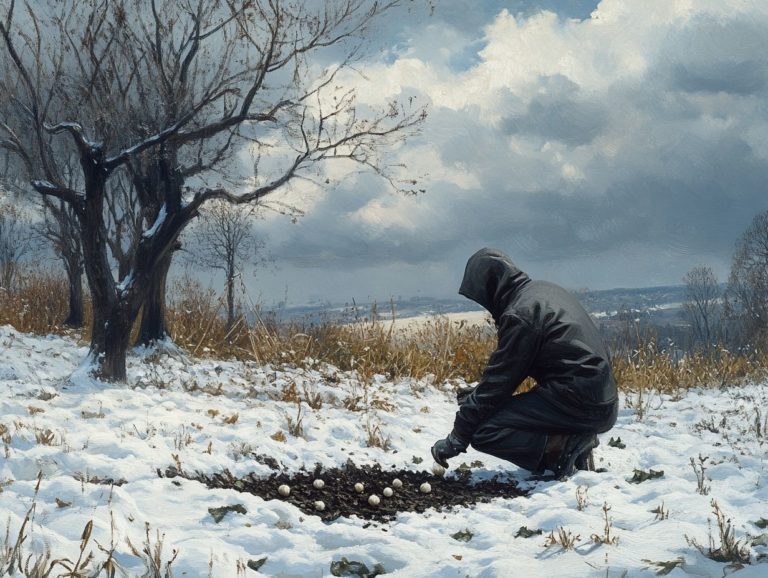Keeping Your Soil Healthy in Winter
As winter draws near, it’s common for gardeners and farmers to divert their attention from soil health, thinking it’s not a priority in the colder months. However, healthy soil is essential year-round, especially during winter when it encounters its own set of challenges. Don’t let winter catch you off guard!
This article delves into the importance of preserving soil vitality throughout the cold season, pinpointing typical issues and presenting effective strategies for preparation, protection, and revitalization.
Regardless of whether you re a seasoned gardener or just starting out, grasping these principles will empower you to keep your soil strong and primed for flourishing growth come spring.
Contents
- Key Takeaways:
- The Importance of Healthy Soil in Winter
- Signs of Unhealthy Winter Soil
- Preparing Your Soil for Winter
- Protecting Your Soil During Winter
- Revitalizing Soil After Winter
- Tools and Techniques for Healthy Winter Soil
- Frequently Asked Questions
- What steps can I take to keep my soil healthy during the winter?
- Why is it important to maintain soil health in winter?
- Can I still add amendments to my soil in the winter?
- How often should I water my soil in the winter?
- How can I effectively prevent soil erosion during winter?
- Should I cover my garden beds during winter?
Key Takeaways:
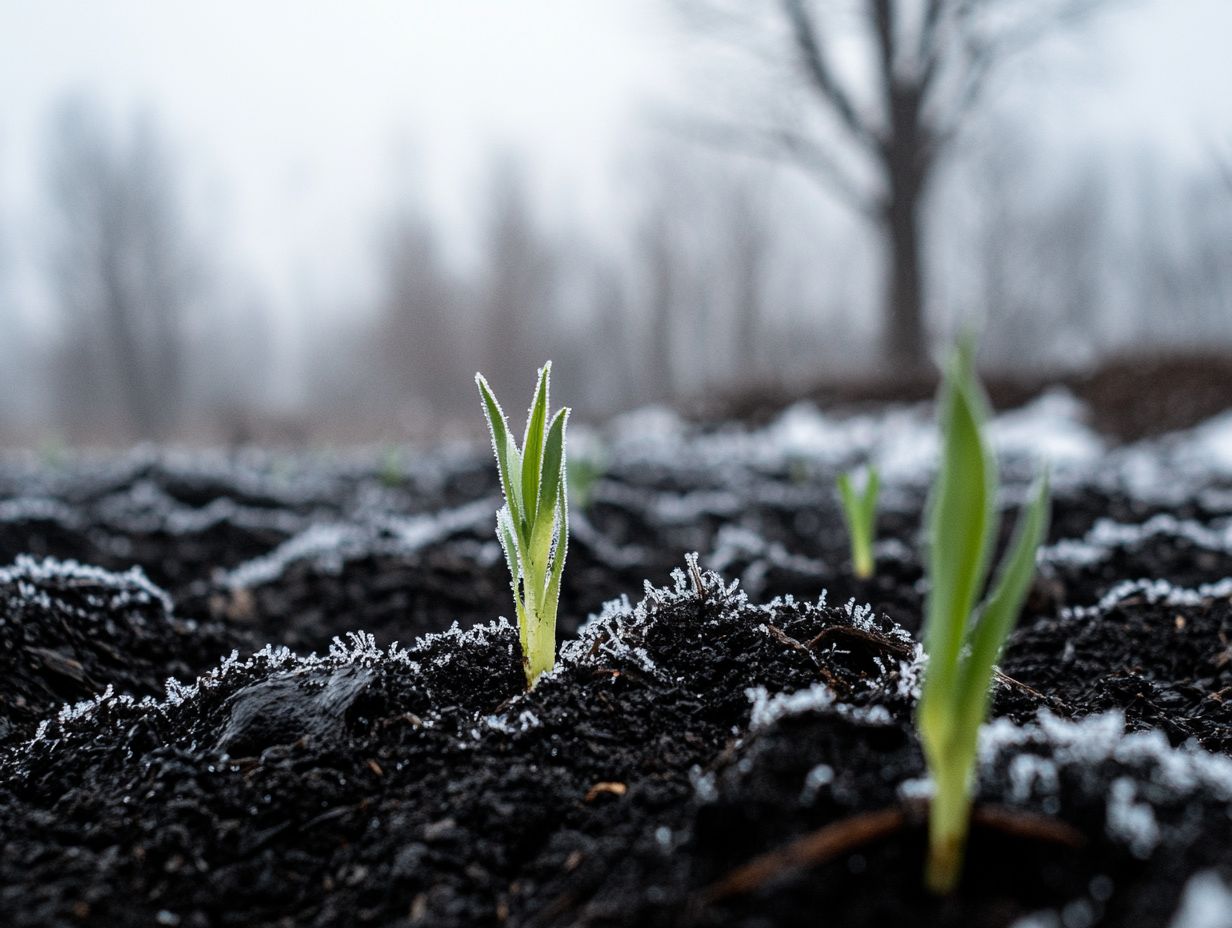
- It is crucial to maintain healthy soil in winter to support plant growth in the spring.
- Signs of unhealthy winter soil include compaction, erosion, and nutrient depletion.
- To prepare for winter, amend soil with organic matter and protect it with cover crops or mulch.
The Importance of Healthy Soil in Winter
Healthy soil is essential for your gardening success, particularly during the winter months when it encounters distinct challenges. As temperatures fall, the living organisms within the soil diminish, impacting the availability of nutrients vital for thriving crops in the spring. To ensure your garden is ready for the colder season, consider preparing your planting beds for winter.
By grasping the critical role of organic matter materials like compost and mulch you can significantly improve soil health. This will help retain moisture, prevent erosion, and support plant roots.
By adopting sustainable practices like planting cover crops, you can enhance soil quality, cultivating a rich environment that promotes vigorous growth as the season unfolds.
How Winter Affects Soil
The winter season presents a unique set of challenges for soil health, driven by plummeting temperatures and shifting moisture levels. During this time, the composition of your soil can undergo significant changes, making it essential for you to grasp the underlying dynamics at play.
Cold temperatures can cause the upper layers of soil to freeze and thaw, disrupting its structure and potentially heightening erosion risks. Moisture retention also becomes a critical concern, as frozen ground struggles to absorb water, often leading to surface runoff instead.
To counter these challenges, consider incorporating organic matter like compost or mulch. Not only does this practice help safeguard soil health, but it also enhances moisture retention, ensuring that essential nutrients remain readily available for your plants when the growing season returns.
Signs of Unhealthy Winter Soil
Recognizing the signs of unhealthy winter soil is essential for effective gardening practices. Several indicators can reveal underlying issues that may impede plant growth as spring approaches.
By being attentive to these signs, you can proactively address potential problems and set the stage for a flourishing garden in the warmer months.
Common Winter Soil Problems
Identifying common soil issues during winter, such as erosion and nutrient loss, gives you the power to take proactive measures in your organic garden. These challenges can significantly hinder plant growth and overall garden health.
Erosion, often worsened by heavy snowfall and thaw cycles, strips away vital topsoil, leading to diminished soil quality. Nutrient loss can occur through leaching during winter rains, which washes away essential nutrients crucial for robust plant development and leaves your soil depleted.
Winter weeds can complicate nutrient management as these opportunistic plants vie for the limited resources available.
By recognizing these issues early, you can devise effective strategies to mitigate their impact on your cherished garden.
Preparing Your Soil for Winter
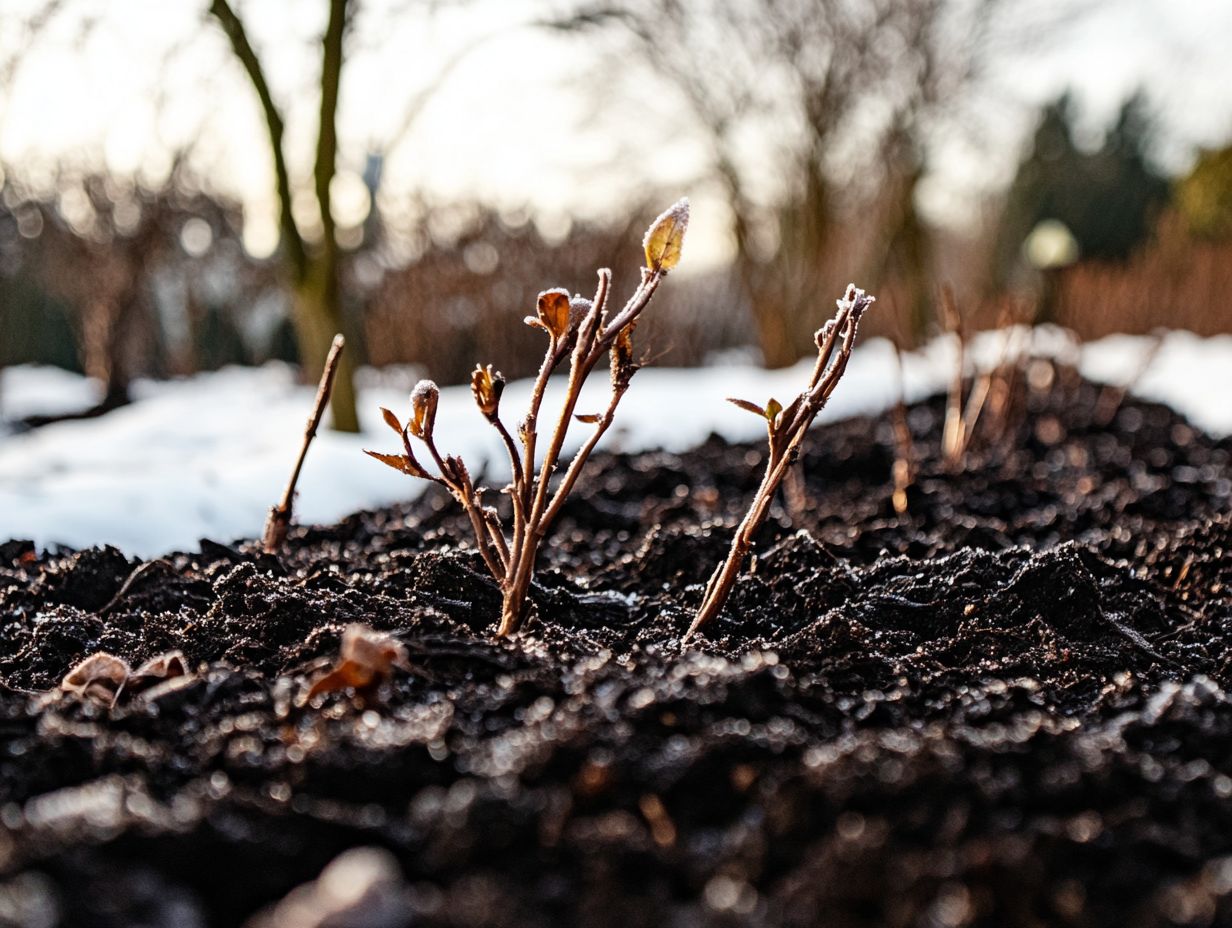
Properly preparing your soil for winter is crucial for safeguarding its health and ensuring vigorous growth come spring. For those interested in sustainable practices, implementing tips for growing microgreens in winter can also enhance nutrient retention and prevent erosion during this season.
By taking these thoughtful measures, you set the stage for a thriving garden in the warmer months ahead.
Steps to Take Before Winter Hits
Taking specific measures before winter arrives can significantly enhance your soil health, especially when preparing your soil for spring in cold climates. This ensures it remains fertile and ready for planting in the spring.
This proactive strategy boosts nutrient availability and aligns with sustainable gardening practices. Start with soil testing, which uncovers pH levels a measure of soil acidity or alkalinity and nutrient deficiencies, guiding you in making precise amendments.
Once that s established, adding compost enriches the soil with organic matter. This fosters vital microbial activity for nutrient movement in the soil.
Sowing cover crops like rye or clover acts as a protective layer. It prevents erosion, improves soil structure, and fixes nitrogen, nurturing a thriving ecosystem beneath the surface.
By adopting these strategies, get ready to build a strong foundation for vibrant growth when the warmer months return!
Protecting Your Soil During Winter
Protect your soil now to ensure a thriving garden in spring! Taking the right steps can preserve its integrity and prepare it for the next growing season.
Strategies for Maintaining Soil Health
Maintaining soil health during winter can lead to healthier garden beds and vibrant crops in spring, especially by using natural fertilizers in winter.
One effective strategy is mulching. This not only protects your soil from harsh winter conditions but also retains moisture and enriches it with organic matter as it breaks down. For more detailed information, check out this guide on maintaining moisture levels in winter gardens. Using a layer of straw, leaves, or wood chips creates a protective barrier that improves soil structure.
Incorporating cover crops like clover or rye offers numerous benefits. These plants prevent erosion, suppress weeds, and boost nutrient levels through their natural growth cycles.
By prioritizing these sustainable practices, you can effectively promote biodiversity and cultivate a thriving ecosystem that works in harmony with nature.
Revitalizing Soil After Winter
Revitalizing your soil after winter is crucial for cultivating healthy, nutrient-rich crops in spring. This process involves assessing the soil conditions and reintroducing essential organic matter for a thriving garden.
Steps for Restoring Soil Health in Spring
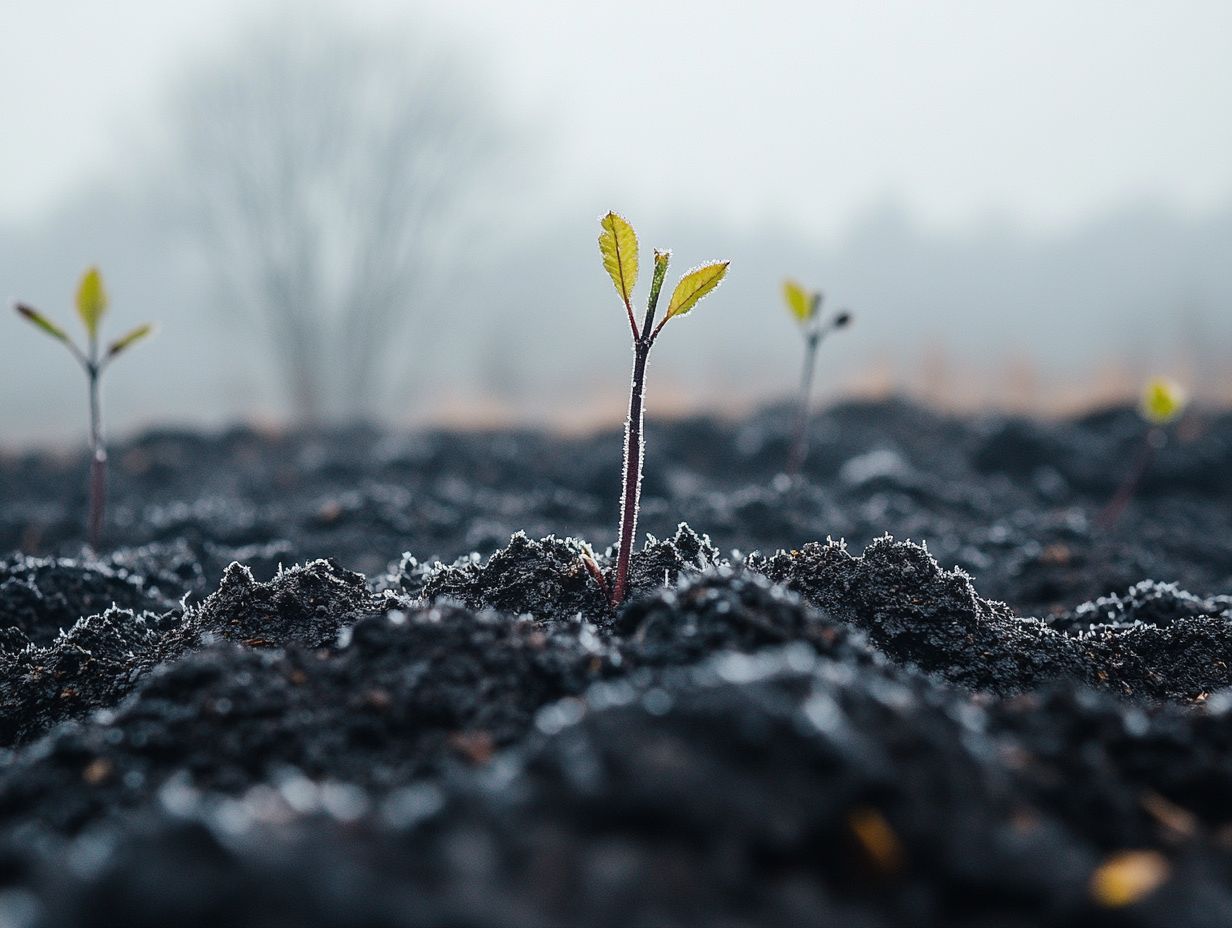
Restoring soil health in spring is essential for a successful garden. It requires specific steps, like adding organic matter and ensuring adequate nitrogen levels to support healthy crops.
To rejuvenate your soil, start by adding compost or well-rotted manure. This enriches your ground with essential nutrients while improving its texture and aeration.
Next, test the soil to determine its pH and nutrient content. This information is invaluable for crafting a tailored amendment strategy.
Consider introducing nitrogen-fixing plants like legumes, which naturally enhance soil fertility. Proper drainage will also prevent soil compaction, creating an environment that nurtures beneficial microorganisms.
By following these practices, you lay the foundation for a thriving garden, ultimately leading to bountiful harvests throughout the season.
Tools and Techniques for Healthy Winter Soil
Utilizing the right tools and techniques is essential for preserving the health of your soil during the winter months. These strategies, including understanding the role of soil in plant health in cold climates, enable you to effectively manage moisture levels, enrich organic matter, and combat erosion, ensuring your soil remains vibrant and productive.
Recommended Equipment and Practices
Investing in the right equipment right now can dramatically boost your soil health this winter. Embracing best practices can remarkably enhance soil health throughout the winter months.
Use soil testers to evaluate nutrient levels and pH. This will guide your application of organic amendments like compost, ensuring your plants receive the precise nutrient balance they need.
Implement winter mulching techniques by spreading straw or wood chips. This will insulate the soil, minimize erosion, and retain moisture, nurturing a thriving ecosystem beneath the surface.
Together, these strategies not only improve soil structure but also encourage the activity of helpful tiny organisms that improve soil health. Ultimately, this leads to more resilient and fertile land for your future planting seasons.
Frequently Asked Questions
What steps can I take to keep my soil healthy during the winter?
To keep your soil healthy in winter, try these steps:
- Add a layer of mulch to protect it from freezing temperatures.
- Apply compost to provide nutrients.
- Avoid walking on frozen or wet soil to prevent compaction.
Why is it important to maintain soil health in winter?
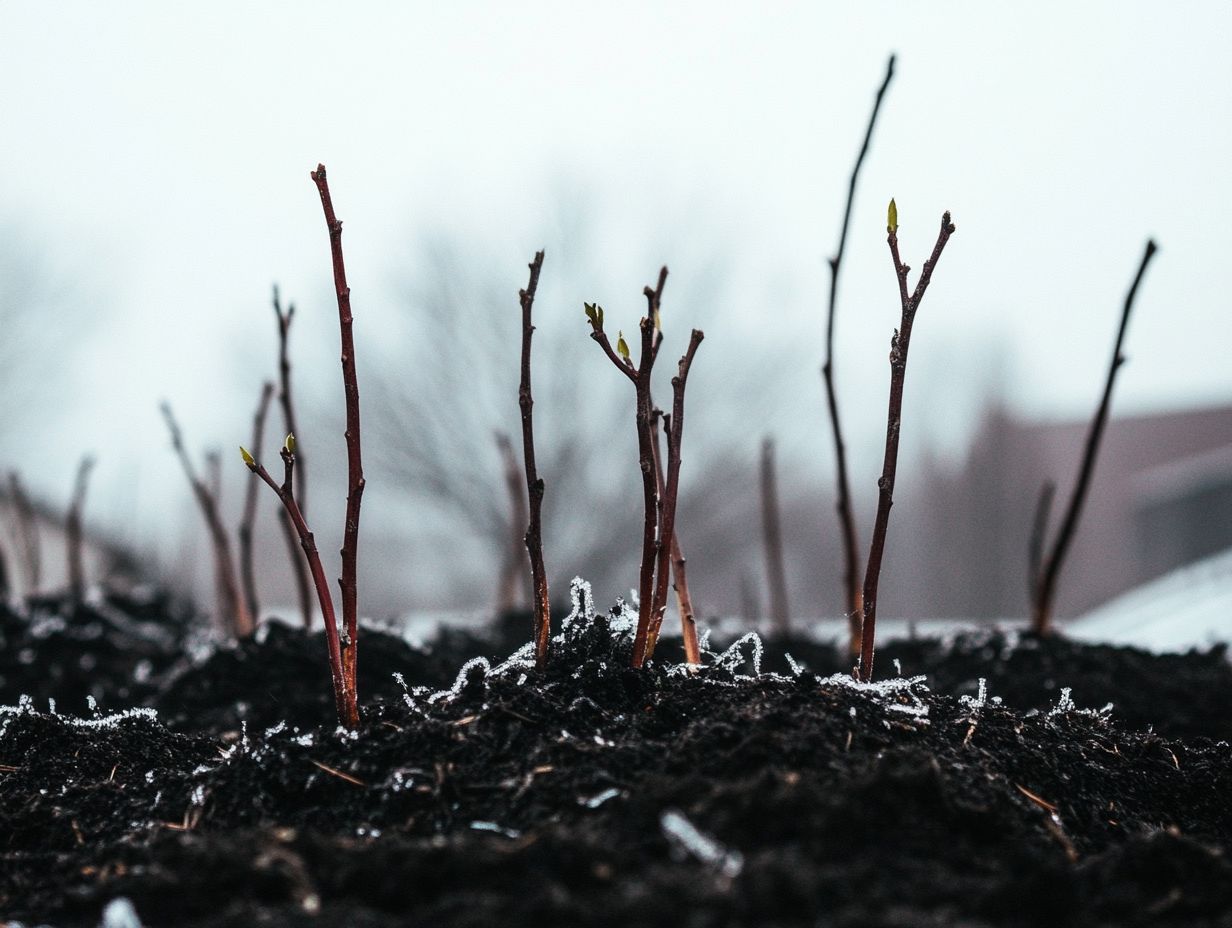
Maintaining soil health in winter ensures that your plants will have a strong foundation to grow from in the spring. For best practices, consider these tips for sustainable winter gardening, which also help to prevent erosion and nutrient depletion.
Can I still add amendments to my soil in the winter?
Yes, you can still add amendments to your soil in the winter. Compost and mulch can be added to provide nutrients and protect the soil, but avoid adding fertilizers as they can be less effective in colder temperatures.
How often should I water my soil in the winter?
The frequency of watering will depend on your climate and the amount of rainfall. In general, it is best to water deeply and infrequently to prevent waterlogging and promote deep root growth.
How can I effectively prevent soil erosion during winter?
To prevent soil erosion in winter, consider these practices:
- Use mulch and cover crops to protect the soil.
- Avoid over-tilling to help hold the soil in place.
- Leave plant debris on the soil.
Should I cover my garden beds during winter?
Covering your garden beds can help to protect your soil during winter, especially in areas with harsh winters. Try using burlap, straw, or plastic covers to give your soil a warm winter coat!


